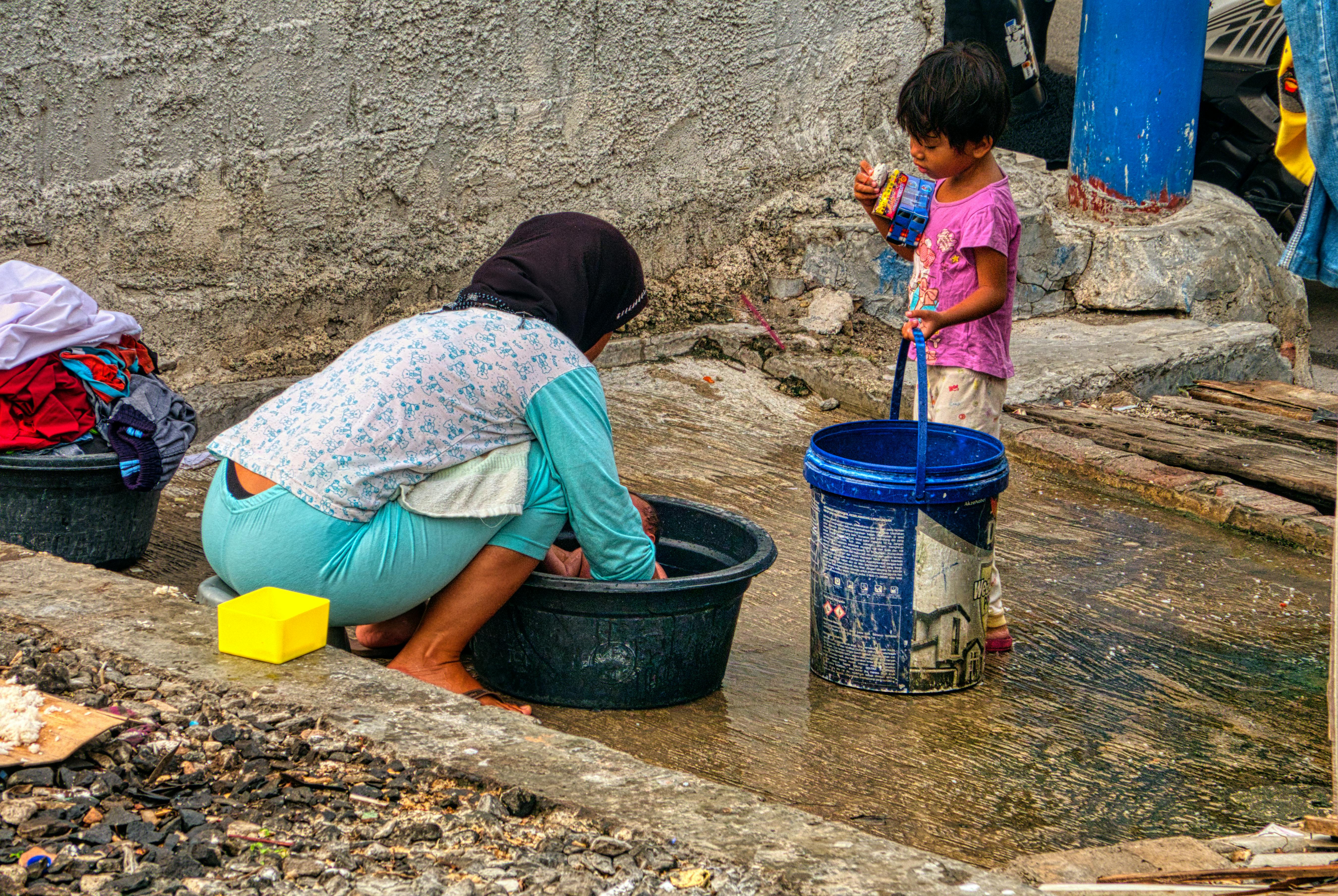Tankless water heaters are becoming increasingly popular as an alternative to traditional water heating systems. Tankless water heaters provide an unlimited supply of hot water and are more energy efficient than traditional tank-style heaters. While tankless water heaters do not require a storage tank, there are still maintenance tasks that need to be performed in order to keep the unit running efficiently. One of these tasks is flushing the tankless water heater. Flushing a tankless water heater is important because it helps remove sediment buildup from the unit, which can reduce its efficiency and cause damage over time. In this article, we will discuss why flushing a tankless water heater is important and how to do it properly.A tankless water heater is a type of water heating system that does not use a storage tank to heat and store hot water. Instead, it uses either gas or electricity to heat water on demand, as it passes through the unit. This type of system is more efficient than traditional storage tank systems since it does not have to continuously reheat stored water.
Flush A Tankless Water Heater
Flushing a tankless water heater is an important part of regular maintenance to ensure that it remains in good working order. Tankless water heaters are an efficient and cost-effective way to heat water in your home, but they require regular maintenance to ensure their longevity. Flushing the tankless water heater helps remove any buildup of mineral deposits that can cause it to malfunction and can even damage the unit if not taken care of. This buildup of minerals can also reduce the efficiency of the unit, leading to higher energy costs. Regular flushing of the tankless water heater will help maintain its efficiency and extend its life.
Flushing a tankless water heater is relatively easy and can be done on your own without professional help. The first step in flushing your unit is to turn off both the power and the gas supply at the main switchboard or gas meter. Once this is done, you will need to disconnect all hoses from the unit and use a garden hose to flush out any sediment or minerals from inside the unit. Make sure you run fresh water through for several minutes until all sediment has been removed before reconnecting all hoses and turning on both the power and gas supply again.
It’s important to flush your tankless water heater regularly as this will help maintain its efficiency and extend its life span. Flushing helps remove any mineral deposits that could cause problems with operation or reduce performance, which could lead to higher energy costs over time. Regular flushing also helps ensure that all parts are working properly so you don’t have any unexpected surprises down the road when it comes time for repairs or replacements. Taking proper care of your tankless water heater now will save you money in the long run!
Benefits Of Flushing A Tankless Water Heater
Flushing a tankless water heater offers a number of advantages that can help improve the efficiency and performance of the system. It is an important part of regular maintenance and should be done at least once a year to keep the system running smoothly. Here are some of the main benefits of flushing a tankless water heater:
1. Improved Efficiency – Flushing a tankless water heater helps remove sediment, scale, and other contaminants that can build up over time and interfere with the efficient operation of the system. By removing these contaminants, it can help to improve efficiency, which in turn will help to save energy costs in the long run.
2. Increased Longevity – Regularly flushing a tankless water heater helps to keep it free from sediment, scale, and other contaminants that can decrease its lifespan over time. This helps to ensure that your system will last longer and provide you with reliable service for years to come.
3. Reduced Maintenance Costs – By regularly flushing your tankless water heater, you can save money on costly repairs or replacements down the line. This is because all of the sediment, scale, and other contaminants are being regularly removed from your system before they can cause any serious damage or lead to expensive repairs or replacements.
4. Improved Water Quality – Regularly flushing your tankless water heater helps to ensure that you are getting clean, safe drinking water out of your tap or showerhead each time you use it. This is because all of the sediment, scale, and other contaminants are being removed from your system before they have a chance to get into your drinking water supply.
Flushing a tankless water heater is an important part of regular maintenance that will help ensure its efficient operation and improved longevity over time. By doing so regularly, you can also save money on costly repairs or replacements down the line while also improving your overall water quality as well as saving energy costs in the long run.
Flushing a Tankless Water Heater
Flushing a tankless water heater is an important part of regular maintenance that helps to keep your unit running efficiently. If you’ve never done it before, it can seem like a daunting task, but with the right steps, it’s actually quite easy. Here’s how to flush a tankless water heater step-by-step:
First, you’ll need to turn off the power or gas supply to the unit. You may also want to shut off the water supply if you’re able to do so. Once this is done, you can open up the access panel on your tankless water heater and locate the cold water inlet valve. This valve should be shut off.
The next step is to attach a garden hose to the drain valve on your tankless water heater and run the other end of the hose outside where it can safely drain away from your home. Once this is done, you can open up both hot and cold water valves on your unit and allow any sediment and debris that has built up over time to be flushed away.
After flushing for several minutes, make sure all of the sediment has been completely removed by checking that there are no chunks or particles in the hose draining away from your home. Then turn off both hot and cold valves on your tankless water heater, close up the access panel, and turn on both power or gas supply as well as the water supply (if applicable).
Finally, run some hot water through all of your taps in order to clear out any residual sediment from within your plumbing system. You should then be able to enjoy an efficient tankless water heater for years to come!
Tools and Materials Needed to Flush a Tankless Water Heater
Flushing a tankless water heater is an important step in maintaining the unit. It helps to remove sediment and mineral deposits that can accumulate over time, which can reduce the efficiency and life of your tankless water heater. In order to properly flush a tankless water heater, you will need the following tools and materials: a garden hose, bucket, screwdriver, adjustable wrench, plumber’s tape, water softener cleaner or white vinegar, and distilled white vinegar.
The first step is to make sure that all of the power sources to the unit are turned off. This includes turning off the electricity or gas supply to the heater. Then shut off all of the hot water faucets in your home. This will ensure that no hot water is running from any of these sources while you are flushing the tankless water heater.
Next, attach one end of a garden hose to an outside spigot or cold water tap. Place the other end into a bucket or a drainage area. Make sure that it is below where you will be working on the tankless water heater so that any sediment or mineral deposits can be easily drained away without causing any messes or damage around the unit.
Once everything is ready to go, locate and open up the drain valve on your tankless water heater. This may require using a screwdriver depending on your model of tankless water heater. Use an adjustable wrench to loosen up any additional connections if necessary before opening up the drain valve completely.
Once open, turn on both cold and hot valves at full blast for about two minutes each time until all of the sediment and mineral deposits have been flushed away from inside of your unit. Make sure you keep an eye on how much water has been drained in order to avoid over-filling your bucket or drainage area with too much waste material from inside of your tankless water heater.
Once all of this has been done, turn off both cold and hot valves and close up your tankless water heater’s drain valve using plumber’s tape for added protection against leaks later on down the road. Finally, fill up a bucket with either distilled white vinegar or some type of specialized cleaner made specifically for cleaning out tanks like those found in tankless units before pouring it into either one of those same cold/hot valves you opened earlier for flushing out sediment/mineral deposits. Let it sit there for about one hour before draining out as much as possible afterwards before reopening both valves once more for another two minutes each way just like you did previously when flushing out sediment/mineral deposits earlier on during this process before closing them back up again afterwards once more as well as turning off all power sources connected directly with your unit (i.e., electricity/gas supply) once finished cleaning out your entire system completely too!

Before You Flush Your Tankless Water Heater
Before you flush your tankless water heater, it is important to take some safety precautions. First, turn off the power to your water heater. This will help to ensure that you don’t accidentally shock yourself while performing maintenance. Next, shut off the water supply valve, and attach a garden hose to the drain valve. Then open the pressure relief valve on the top of the water heater in order to release any pressure built up in the tank. Once this is done, you can begin flushing out any sediment or other debris that may have accumulated in your tank.
After You Flush Your Tankless Water Heater
Once you have finished flushing your tankless water heater, it’s important to properly clean and maintain it in order to keep it running efficiently. Start by refilling the tank with fresh cold water and then turning on all of the hot-water faucets in order to purge any air from the pipes. Finally, turn on the power and open up any valves that were closed during the flushing process. Make sure to check for any leaks or unusual noises and adjust them accordingly. With regular maintenance and attention, your tankless water heater should provide you with many years of reliable service.
How Often Should You Flush Your Tankless Water Heater?
Flushing your tankless water heater is an important part of routine maintenance. Doing so will help to extend the life of your unit and ensure it continues to operate at peak efficiency. But how often should you be flushing your tankless water heater?
The frequency of flushing will depend on the type and age of your tankless water heater. Generally, newer units should be flushed at least every 6 months, while older models may require more frequent flushing. As always, check with the manufacturer’s instructions for the exact maintenance schedule for your specific unit.
When flushing your tankless water heater, you’ll want to start by turning off the power and water supply to the unit. Then, attach a garden hose to the drain valve and allow the water to run out until it runs clear. This will help remove any sediment or mineral buildup that has accumulated in your heater over time. Once this is done, turn off the drain valve and disconnect the hose before turning on both the power and water supply again.
It’s also important to remember that if you have hard water in your home, you may need to flush your tankless water heater more often than recommended by the manufacturer. Hard water can cause mineral deposits to build up in your tankless system over time, which can reduce efficiency and cause problems down the road. If you suspect this is happening in your home, contact a professional plumber for advice on how often you should be flushing your unit.
By following these steps and adhering to a regular maintenance schedule for your tankless water heater, you can ensure it continues running smoothly year after year. Don’t forget to check with manufacturer’s instructions regarding exactly when and how often you should flush your system for optimal performance!
Common Problems with Not Flushing Your Tankless Water Heater
Not flushing your tankless water heater can cause a number of issues that can impact the performance of the unit. The most common problems include reduced efficiency, clogged water lines, mineral deposits, and corrosion.
Reduced Efficiency: When a tankless water heater is not regularly flushed, it can become clogged with minerals and other debris, leading to reduced efficiency. This means that the unit will be using more energy to heat the same amount of water that it did when it was first installed. Over time, this can lead to increased energy costs and decreased performance of the unit.
Clogged Water Lines: If your tankless water heater is not flushed regularly, mineral deposits can build up in the pipes over time. This can lead to clogging of the pipes and reduce the flow rate of hot water coming from your unit. As a result, you may experience lower-than-normal temperatures when running hot water from your faucets or shower heads.
Mineral Deposits: Mineral deposits are another common issue when a tankless water heater is not regularly flushed out. These deposits can build up in the pipes over time and eventually restrict the flow of hot water coming from your unit. In addition to reducing overall performance, these deposits can also lead to corrosion over time if left unchecked.
Corrosion: As mentioned above, mineral deposits left unchecked can lead to corrosion over time as they react with metal components in your tankless water heater system. Corrosion can weaken and damage components in your system leading to decreased efficiency and possible leaks or failures in other parts of the system as well as an increased risk of carbon monoxide poisoning due to inadequate ventilation around combustion chambers within your unit.
Ultimately, regular flushing of your tankless water heater is important for ensuring optimal performance and energy savings over time. Regular maintenance will also help reduce costly repairs that could be caused by neglecting these important steps in maintaining your system’s health and safety.

Conclusion
Tankless water heaters are a great option when it comes to providing hot water on demand. They are more energy efficient than traditional tank water heaters and generally require less maintenance. While tankless water heaters do not need to be flushed, it is recommended that you do so periodically to remove any sediment buildup that could affect the efficiency of the unit. Flushing a tankless water heater is not difficult but should only be done by experienced professionals.
Taking the time to properly maintain your tankless water heater will help ensure that it is running efficiently and you will have hot water when you need it. Make sure you follow the manufacturer’s instructions for proper maintenance and always consult with a professional if you have any questions about how to flush a tankless water heater.

